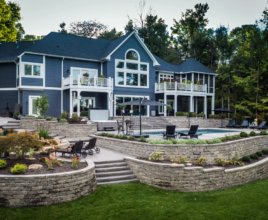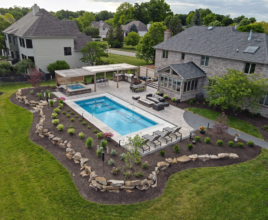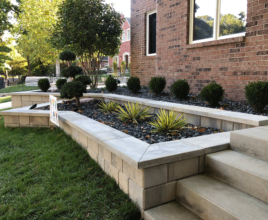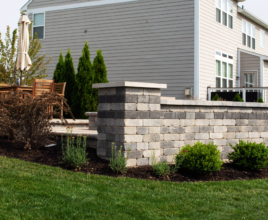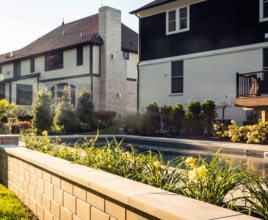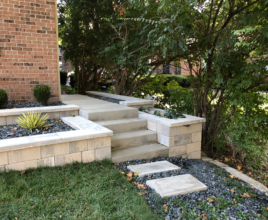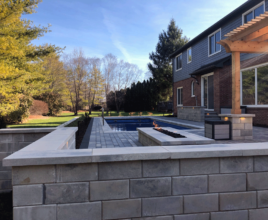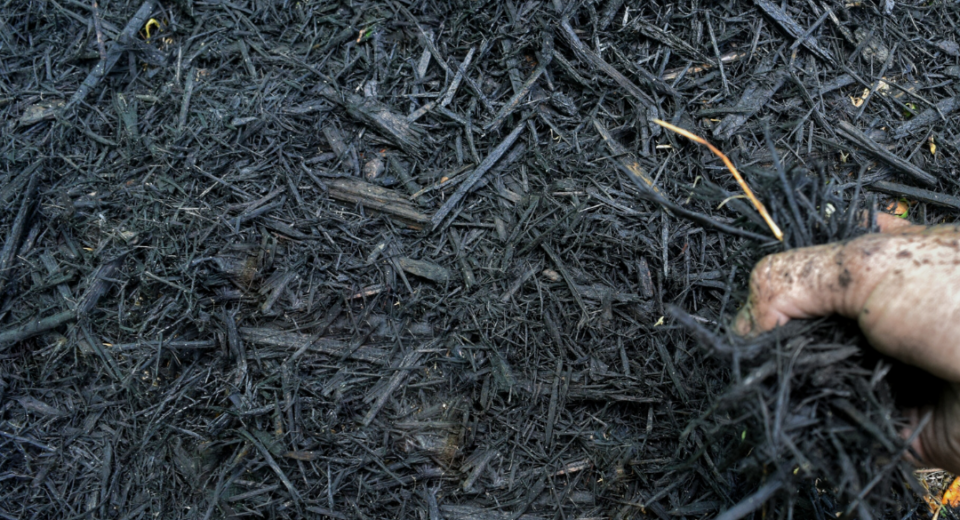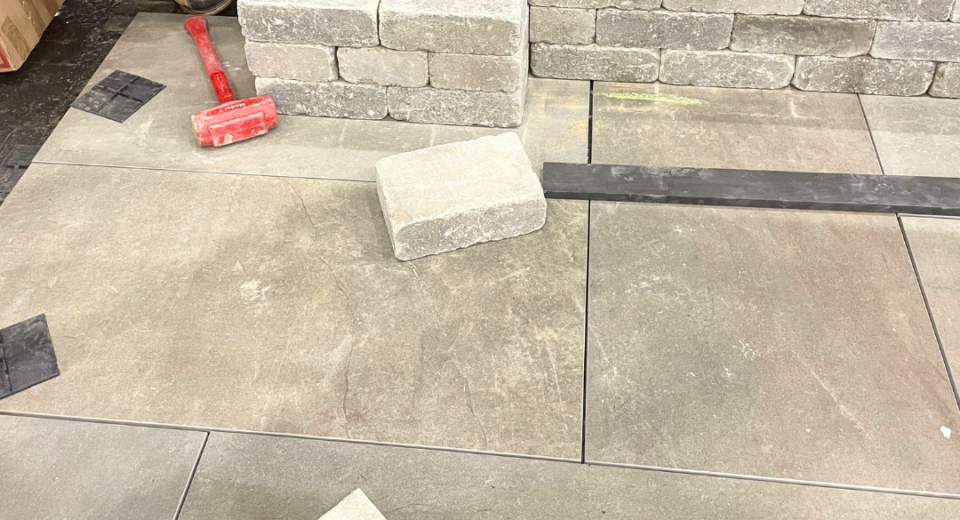Are Retaining Walls Right for Your Project?
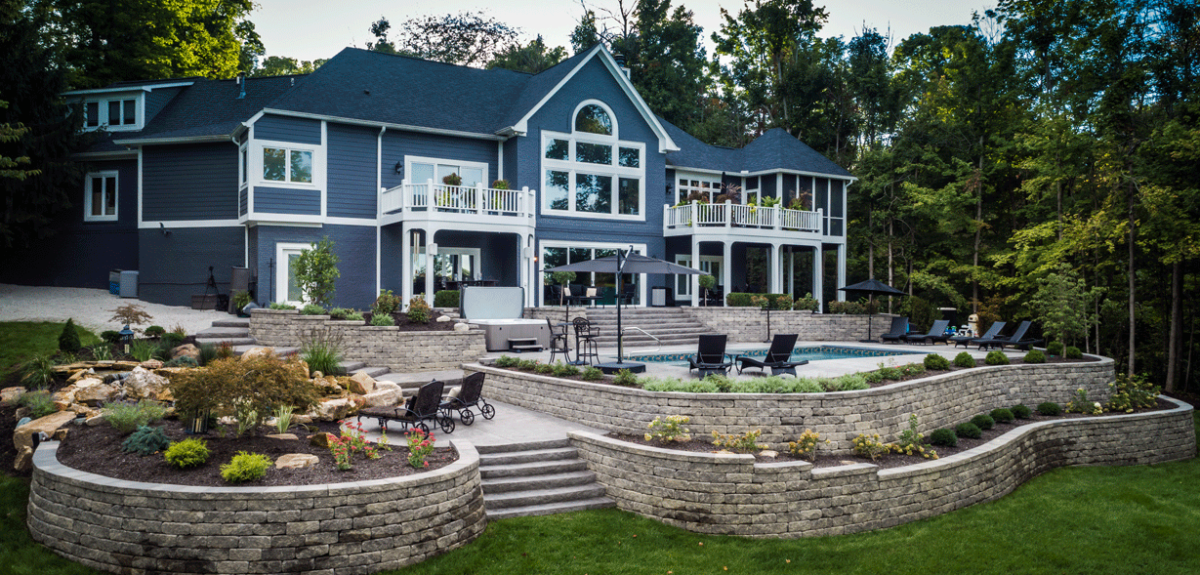
Retaining walls can make your dream outdoor landscape possible. Read on to find out how they work.
Retaining walls can help prevent soil erosion, create usable beds out of steep terrain, and provide decorative or functional landscaping features. Whether to create more usable space or support a complex landscape design, our team’s experience constructing retaining walls helps transform outdoor spaces into high-functioning, multi-dimensional, and durable landscapes.
What Exactly is a Retaining Wall?
For those who don’t know, a retaining wall is a vertical support structure that holds back or retains soil to prevent shifting, ultimately creating level areas for landscaping. Even more simply put, retaining walls can turn your sloped lawn into a usable flat space. While great for creating usable space in areas where there isn’t much flat land to work with, they can also add depth to a project, provide privacy, and even add extra wall-seating depending on the construction and materials used.
Here is just one example of what retaining walls can do for an outdoor space:
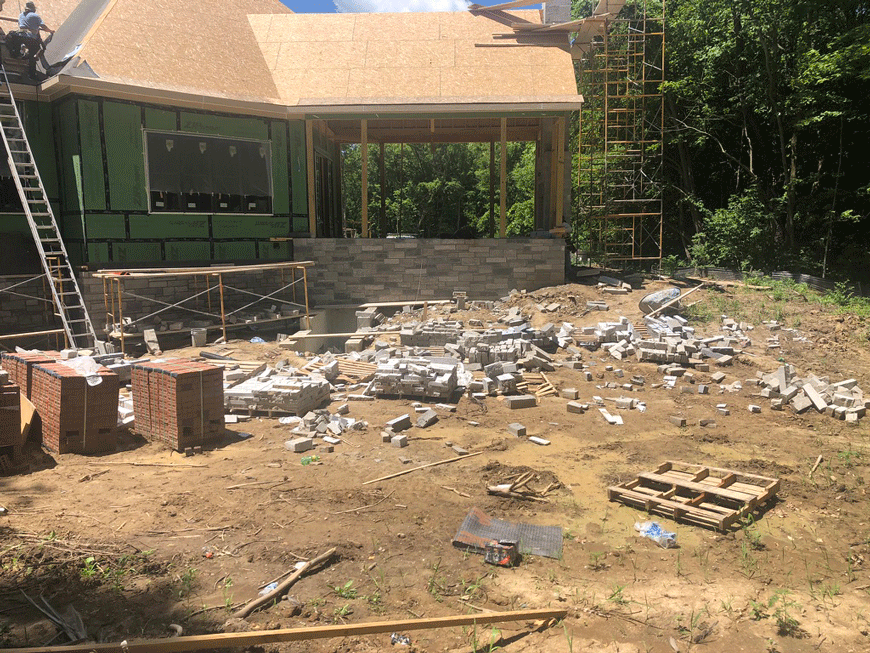
Before 
After
How Do Retaining Walls Work?
In short, plenty of soil is dug out, a lot of sturdy stone materials are put in, and the constructed walls don’t shift because the potential for soil contraction and expansion lessened. There are a few ways to construct retaining walls depending on the size and scale of the project, with some methods providing more support than others. The Pros team complies with the current best practices for constructing retaining walls on our projects. The construction involves a complex layering of stone materials, commonly starting with a layer of fine base gravel. We continue layering and backfilling with larger gravel as well as other materials that support the construction of the walls for long-term durability.
The complex and carefully planned layers of material are all intended to maintain the integrity of the walls over time. Soil can retain a high moisture level so when temperatures drop, it expands. Without durable stone materials and careful construction filling the interior of the built-up walls, the shifting earth would quickly push the walls out of place and cause them to settle in a different location as the ground thawed, quickly deteriorating the quality of the construction.
Where to Start?
If this all sounds like A LOT of work, you’re right. It can be. Planning and constructing stable retaining walls on your property can require a lot of time, energy, and heavy materials to get a successful and long-lasting result. We highly recommend speaking to a landscape designer, architect, contractor, or another hardscape professional before making any plans to construct retaining walls that would drastically change your property’s landscape. Double-check that your chosen professional is qualified for the work you want to do by gauging their experience. Check out photos of their work, ask for references, or confirm their certifications or accreditations, such as with ICPI (Interlocking Concrete Paver Institute) or the National Concrete Management Association.
Things to Consider:
- Location of Utilities
Ensuring your retaining walls are built with utility access in mind is vital to remember as you make plans. Retaining walls shouldn’t make buried utility lines more difficult to access if ever the need arises.
- Drainage
Ideally, your property’s drainage system will be factored into the scope of any planned landscape construction. Making sure water is running down and away from your home’s foundation and any outdoor hardscape feature is crucial to prevent erosion, flooding, cracking, or shifting over time. Well-planned retaining walls with drainage in mind can be super beneficial in alleviating heavy run-off caused by steep gradation by redirecting water.
- Scope of Project Area
Retaining walls are, after all, built into the earth, and therefore can be expected to shift over time. Steep property, flood zone risk areas, or any other potential erosion possibilities will put the construction of your retaining walls to the test. It is up to the quality of construction to ensure that planned landscape structures can maintain their integrity for as long as possible, ideally for many years to come.
Explore some of our work that highlights the many uses of retaining walls:
Are you thinking about what you could do with your sloped yard with the potential of retaining walls in mind? Give us a call or fill out our virtual project form. A short video message of your space can give us an idea of what our designers can do to make the most of your yard with a custom design plan.

